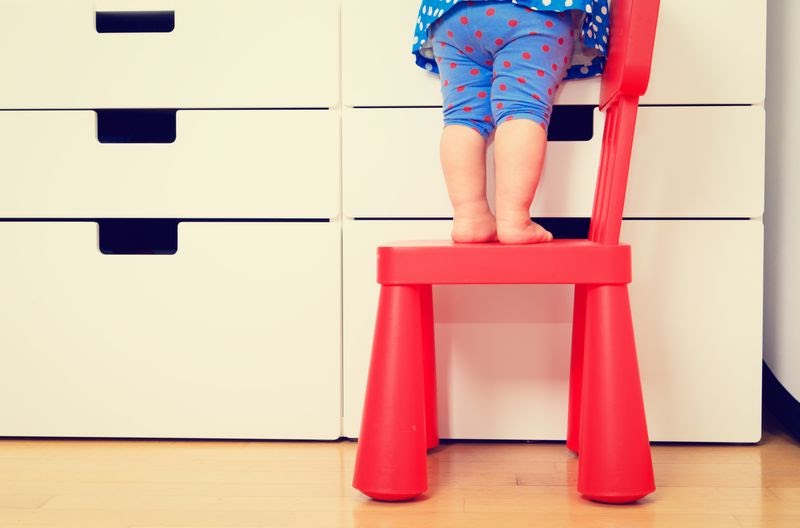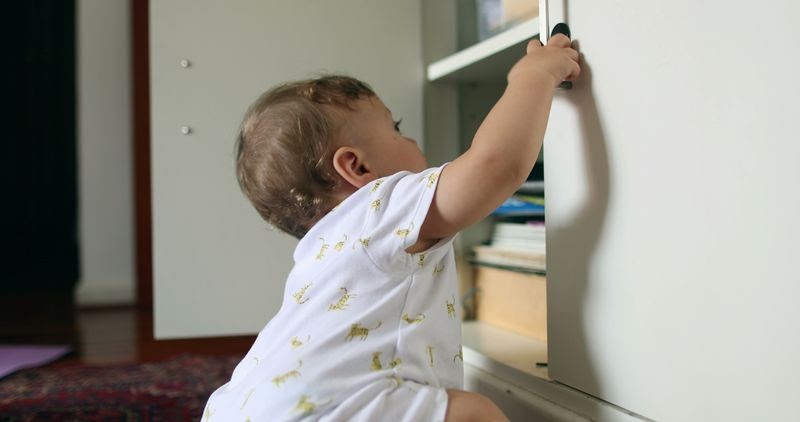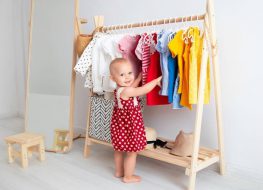
Babies and toddlers are curious creatures. They love to explore, run around, and touch everything. If you have a baby or toddler in the house, then you know what it’s like to be on constant guard duty. You need to always watch your little ones so that they don’t get into any trouble—especially when they’re near sharp corners!
Why Kids Love To Explore
Your little one can get rowdy at around age 1 and 2 years. They jump, flip, and run around in the most weirdly entertaining way. At some point, it will test your patience. But it helps if you understand why they are keen to behave in such an exploratory way.
- They’re learning how their bodies work.
Your toddler is moving all the odd positions because they are at the stage where they are discovering how their bodies work. If you ever remember being in that position, you’ll empathize with the fact that there’s so much energy packed on that tiny body to use for testing the limits of motion, so that’s exactly what they do.
Apart from that, this curiosity about how their bodies work is what leads to full physical development. They go on to live as a capable teen once they’re past the stage so let them have it.
- They learn by touching.
In the early stages of your toddler, they will discover the world by touching and feeling things around them. Naturally, this inclination encourages them to run around and move because to touch and feel something, they have to first get near it. So they go about running and touching and throwing things around the house.

The Injuries Kids Face When Exploring
As a result of their instinctive exploration of their bodies and environment, they unknowingly expose themselves to risks. Unfortunately, our toddler isn’t capable of assessing danger yet, so the responsibility falls on our lap as parents.
We should keep several injuries in mind and prepare to ensure our toddler is safe when they run free and explore.
Head injuries
This can result from bumping on a wall while running, falling on top of furniture, or tripping on a slippery floor.
Head injuries can vary from a mild contusion to a severe one, such as a skull fracture, which can result in permanent brain injuries.
Hand injuries
What causes injuries on the hands are activities wherein your toddler is reaching for something. For example, it can be hit by a closing door, squeezed by an accidentally closed drawer, or get stuck in a narrow hole.
Hand injuries range from a mild bruise to as much as getting deep lacerations. Fractures and dislocations are unlikely but should still be considered.
Feet injuries
Your toddler’s exposure to feet injury is at times when they are running. Injuries such as a stubbed toe or a puncture wound at the bottom of the foot are common injuries when running, especially when barefoot.
Injuries while standing are also possible. Heavy objects may fall on your child’s foot and may cause bleeding on the toe’s nail. This commonly happens when your toddler is trying to reach a relatively heavy object above them.
When To Get Help
Some of the injuries mentioned above can be managed at home, especially when it’s mild. In addition, parents should learn how to do first aid so they can respond to their child’s injuries immediately, which is vital for risk mitigation. But there are symptoms that show up that let you know if an injury needs the doctor’s attention. Here are some of them.
Head Injuries
- Noticing a soft spot or a dent on the skull
- Excessive bleeding on the scalp
- Your child is vomiting more than twice
- Unconsciousness or excessive sleeping
- Blood or fluid draining from the nose or ears
- Change of behavior, disorientation
Hand Injuries
- Broken joints or fingers
- Deep lacerations with non-stop bleeding
- Being unable to move the hands and fingers
Feet Injuries
- Deep puncture wounds (tetanus infection)
- Dislocation
- Being unable to move the foot or toes

Steps To Childproof Your Furniture At Home
In most cases, house furnishings are the culprit for the injuries sustained by your toddler. That’s why we’re focusing on these things and how to childproof them. So that next time your kid goes on and explores the house, the drawers and tables they will use to climb or jump on are air-tight and secured. Here are some things you can do to protect your kid.
- Get a feel for the corners of your furniture.
Some will be obvious, like the corners of the table or bed. But some aren’t. A chair is more likely to cause head injury because the height of the seat is leveled to your child’s height. This brings us to the next point.
- Get down on your kid’s (eye) level.
See everything clearly by taking on the vantage point of your toddler. What are the things that can most likely cause a head, hand, or foot injury at their line of sight? Look closely. Are there any tight but dangerous spaces that you need to widen? Go ahead and take the necessary precautions.
- Secure your furniture from falling.
After you have determined the home movables that need some work, start first with installing equipment that prevents it from tipping off. You can buy straps and clips to prevent them from falling and hitting your toddler.
Get a baby proofing corner protector. An exposed and sharp corner can potentially cause severe head injuries, so you need to get a baby-proofing corner protector and install it on the sharp edge of your home furniture to ensure it’s risk-free.
What Are Ashtonbee’s Baby Proofing Corner Guards?
Ashtonbee’s baby proofing edge corner protector is a tool made of a soft gel-like material that covers the prominent corners of your home furniture. Here are some of the benefits you can get from it.
Maximum Impact absorption
The thick and round gel cushion on the outside surface of the corner guard is made for maximum impact absorption and significantly reduces the intensity of bump on a kid’s head, eliminating the risk of severe head injuries, such as skull fractures and severe scalp wounds.
Non-toxic and Hypoallergenic
Ashtonbee’s corner guards (clear) are made of soft and non-toxic material, which means it will not harm your child if they come in contact with it. It’s also hypoallergenic that your little one will not get any rash.
Adaptable
Ashtonbee makes the best baby-proofing corner guards because it can fit in any furniture corner. So you can buy a set of 12 and just switch, put it on your glass table, TV cabinets, or within an area where your child is lingering around and transfer it to another area or set of furnishings easily.
Ashtonbee Gets Your Childproofing Needs
Ashtonbee understands being a parent. They understand the importance of the safety of toddlers and peace of mind for parents. So hit up Ashtonbee to find more child safety products and find what you think is suitable for your own home. Keep your little ones safe today.



